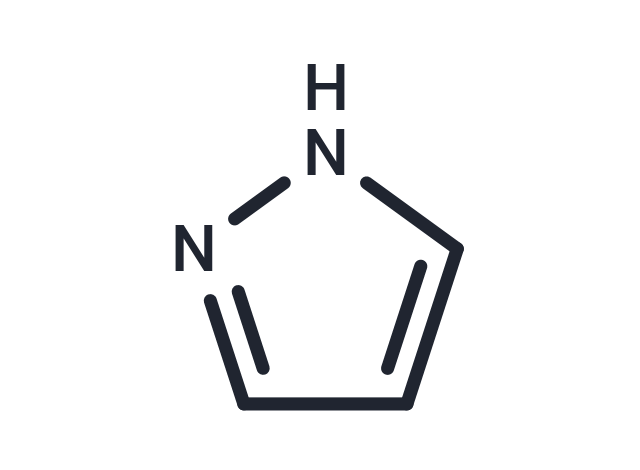Shopping Cart
- Remove All
 Your shopping cart is currently empty
Your shopping cart is currently empty

1H-pyrazole (1,2-Diazole), is a versatile building block, with a vast applications in organic synthesis. The derivatives of Pyrazole are used in medicine, for their analgesic, anti-inflammatory, antipyretic, antiarrhythmic, tranquilizing, muscle relaxing, psychoanaleptic, anticonvulsant, monoamineoxidase inhibiting, antidiabetic and antibacterial activities.

| Pack Size | Price | Availability | Quantity |
|---|---|---|---|
| 5 g | $29 | In Stock | |
| 1 mL x 10 mM (in DMSO) | $29 | In Stock |
| Description | 1H-pyrazole (1,2-Diazole), is a versatile building block, with a vast applications in organic synthesis. The derivatives of Pyrazole are used in medicine, for their analgesic, anti-inflammatory, antipyretic, antiarrhythmic, tranquilizing, muscle relaxing, psychoanaleptic, anticonvulsant, monoamineoxidase inhibiting, antidiabetic and antibacterial activities. |
| Alias | Pyrazole, 1,2-Diazole |
| Molecular Weight | 68.08 |
| Formula | C3H4N2 |
| Cas No. | 288-13-1 |
| Smiles | N1C=CC=N1 |
| Relative Density. | 1.4088 g/cm3 (Estimated) |
| Storage | Powder: -20°C for 3 years | In solvent: -80°C for 1 year | Shipping with blue ice. | |||||||||||||||||||||||||||||||||||
| Solubility Information | DMSO: 50 mg/mL (734.44 mM) | |||||||||||||||||||||||||||||||||||
Solution Preparation Table | ||||||||||||||||||||||||||||||||||||
DMSO
| ||||||||||||||||||||||||||||||||||||

Copyright © 2015-2024 TargetMol Chemicals Inc. All Rights Reserved.